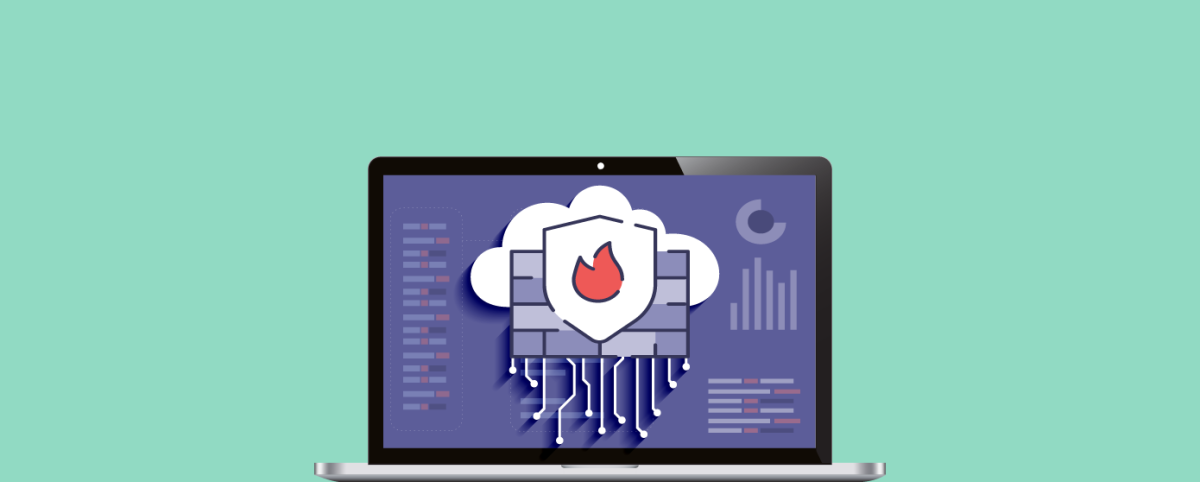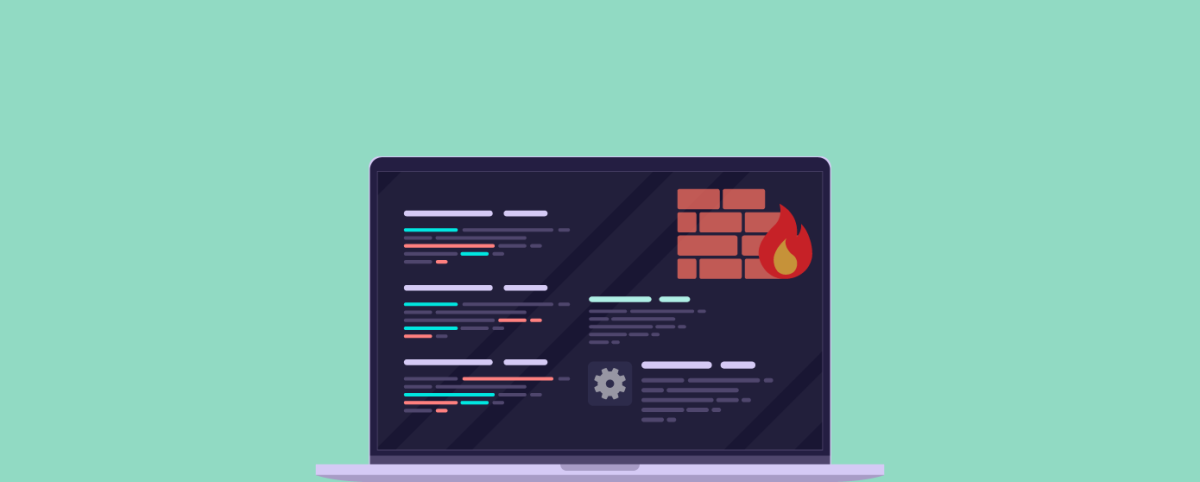Must-Have WAAP Features Financial Institutions Need in 2025
Banking & Financial Services (BFS) firms are shouldering a uniquely heavy share of the global threat load.
The newly released Indusface State of Application Security 2025 study paints a stark picture:
- 1.2 billion attacks were recorded against BFS web sites and APIs in 2024 LinkedIn
- Each BFS property endures about 2 × more attacks per site than the global average (report estimate)
- Vulnerability-targeted attacks ballooned 74 % from Q1 → Q4 2024 LinkedIn
- BFS apps see 2 × more bot attacks per site than other industries LinkedIn
- The sector registers the second-highest volume of blocks triggered by custom WAF rules, just behind healthcare LinkedIn
Why the laser focuses on finance? Strict regulations mean banks generally run strong perimeters, so adversaries pivot to bots, API abuse, and nuanced business-logic exploits that slip past ‘default’ defences. The result is a threat landscape where availability, data integrity, and audit readiness are tested daily.
Below are the six Web Application & API Protection (WAAP) capabilities every financial institution should insist on in 2025.
Key WAAP Features Financial Firms Must Prioritize
1 API-First Discovery & Positive Security
Open-banking and fintech integrations expose hundreds of live and often forgotten API endpoints.
Without full visibility, attackers exploit APIs to bypass perimeter defenses. In fact studies by Indusface and Thales group have found that:
- 46 % of all account-takeover attacksnow target API endpoints rather than web forms, making APIs the primary entry point for credential stuffing and fraud.
- Banking & Financial Services apps endure 2 × more bot attacks per site than the global average, underscoring why they’re a prime target for automated API abuse.
- Automated tools mask malicious activity within the ~1.5 billion annual API calls an average enterprise handles, blending bad-bot traffic with legitimate requests.
- Business-logic abuse accounts for 27 % of API attacks, as adversaries manipulate workflows—like payment authorizations and loan applications—in unintended ways.
- Organizations run an average of 613 APIs, including shadow and legacy endpoints that often lack proper security controls.
What to demand
- Continuous discovery of every external API, with automatic OpenAPI/Swagger spec generation
- Positive-security enforcement that only allows documented methods, parameters, and data types
- Zero-false-positive scanning for OWASP API Top 10i ssues and business-logic flaws
- Virtual patching of critical findings in hours, not development sprints
- Integrated API penetration testing (ideally in your CI/CD pipeline) to uncover nuanced business-logic vulnerabilities that automated scans may miss
Together, these capabilities ensure no API—documented or shadow—can be weaponized against your applications.
Check out the impact of Shadow APIs here.
2. Harden Applications & Mitigate Legacy System Risks
Traditional web, mobile, and legacy core-banking systems remain prime targets for attackers. Financial institutions face a dual challenge: modern front ends built on top of decades-old platforms, and the need to keep critical services online while securing every line of code. Key data points from Indusface and Picus Security:
- 33% critical and high CVSS vulnerabilities remain open even after 180 days
- 40 % of tested financial environments were vulnerable to full domain-admin takeover due to unpatched flaws or misconfigurations.
- The MOVEit file-transfer zero-day in mid-2023 affected over 2,500 organizations and exposed data on 66.4 million individuals globally.
- Despite slight year-over-year gains, preventive security measures in finance average 68 % effectiveness, yet 30 % still report problems preventing attacks.
What to demand
- Comprehensive vulnerability scanning (DAST/DAST + human-verified PTaaS) to catch SQL injection XSS, deserialization, and other OWASP Top 10 flaws.
- Integrated penetration testing and code review—scheduled and on-demand—to uncover business-logic and configuration vulnerabilities that automated tools miss.
- Virtual patching for legacy systems, ensuring critical fixes are applied at the edge when in-code updates aren’t feasible.
- Runtime application protection (WAF) with custom rule support to block exploit attempts in real time.
- Mobile app security features, such as runtime instrumentation, secure storage enforcement, and tamper detection.
- Unified visibility across web, mobile, and API securityin a single portal, correlating findings and response actions for faster remediation.
Together, these capabilities ensure that both modern and legacy components of your application stack are continuously tested and protected—without compromising availability or compliance.
3. Demonstrate Regulatory Compliance & Reduce Audit Burden
Financial institutions face a thicket of overlapping cyber-resilience mandates—each carrying steep fines and reputational risk. Key data points:
- DORA (EU) requires comprehensive ICT risk management, regular resilience testing, and third-party oversight—non-compliance can incur fines of up to 2 % of global turnover.
- SEC rules (US) mandate that public companies disclose material cyber-incidents within four business days, plus annual reporting on cybersecurity governance and board oversight.
- NYDFS regulation compels banks to report any “material” ransomware attack and any ransom payment within 24 hours of decision.
- Global financial firms spend an estimated $181 billion annually on compliance-related activities—over $10 000 per employee—straining budgets and diverting resources from proactive security.
What to demand
- Built-in control mappings that align each security policy to DORA, NYDFS, PCI-DSS, ISO 27001, SOC 2, GDPR, and other relevant frameworks
- Automated evidence collection—time-stamped logs, vulnerability remediation records, and audit trails—exportable in regulator-ready formats
- Real-time compliance posture monitoring with continuous scans against policy baselines and instant alerts on deviations
- Regulator-grade dashboards for executive and board reporting, showing incident response metrics (MTTR, time-to-patch) briefly
- Third-party compliance workflows that assess vendor security certifications, scan partner APIs, and flag lapses before they become audit findings
- CI/CD integration so every build, deployment, and configuration change are tested against compliance controls automatically
Together, these capabilities help financial institutions not only meet today’s stringent requirements but also streamline audit cycles and free up security teams to focus on strategic defenses.
4. DDoS & Bot Mitigation at Internet Scale
DDoS and bot armies are the blunt and stealth weapons of choice against financial applications. Recent data from Indusface and Akamai shows:
- Financial services absorb 34 % of all global L3/L4 DDoS attacks, more than any other industry.
- Bot attacks rose 48 % from Q1 to Q4 2024,
- 9 out of 10 sites faced bot-driven traffic, compared with 6 out of 10 that saw any DDoS.
- BFS applications endure 2 × more bot attacks per site than any other industry.
What to demand
- Globally distributed, in-line scrubbing that scales to absorb 100 × expected traffic without human intervention
- Behavioral fingerprinting by host, URI, IP reputation, ASN, and geography—rather than simple rate limits
- “I’m-under-attack” mode to auto-harden policies instantly, backed by a 100 % uptime SLA
- Fine-grained bot defenses, including UA-based detection, signature validation, CAPTCHA challenges, and anomaly scoring
- Real-time visibility and tuning, with SOC-driven custom rule updates to adapt to emerging bot and DDoS tactics
Together, these capabilities ensure your banking portals and APIs stay online and available—no matter how large or sophisticated the threat.
5. Supply-Chain & Third-Party Risk Mitigation
Financial institutions are only as secure as their weakest vendor. Recent insights highlight the scope of the threat:
- 95 % of breaches involve some form of human error, often stemming from third-party or vendor systems.
- State-sponsored APT campaigns increasingly recruit insiders or compromise service providers to pivot into core banking networks.
- Under EU DORA, firms must now manage ICT-third-party risk continuously or face fines up to 2 % of global turnover.
What to demand
- Origin shielding enforce WAAP IP whitelisting, so only vetted traffic reaches your origin servers.
- Vendor-centric scanning: automatically assess partner APIs, embedded scripts, and third-party components for vulnerabilities and anomalous behavior.
- Zero-day virtual patching: push emergency rules for vendor flaws within minutes, not weeks.
- Continuous compliance workflows: map each vendor to required certifications (ISO 27001, PCI DSS, etc.), monitor renewals, and flag lapses.
- Centralized risk dashboard: correlate third-party incidents, patch status, and audit evidence in one pane—driving faster remediation and regulator-ready reporting.
- Client-side protection: guard against browser-based attacks (e.g., script tampering, DOM manipulation, skimming, supply-chain script exploits) with integrity enforcement.
How AppTrana WAAP Delivers on Every Must-Have Capability
By integrating these controls, financial institutions can extend their security perimeter to include every link in their digital supply chain—transforming potential liabilities into managed risk.
AppTrana WAAP uniquely combines AI-driven automation, ML-powered analytics, human-verified testing, and fully managed services to meet—and exceed—the six key WAAP requirements for financial institutions. Here’s how:
Unified Visibility & Zero-False-Positive Precision
- Single-pane portal correlates findings across attack surface, vulnerability scans, remediation status, DDoS, and bot defenses.
- Human-verified accuracy eliminates false positives, enabling persistent block mode without business friction.
- Real-time log streaming and SIEM integration give security and fraud teams immediate visibility into incidents and controls.
API-First Discovery & Positive Security
- ML-based API discovery uncovers all public-facing and shadow endpoints automatically.
- Positive-security modelling learns legitimate API behavior and blocks deviations in real time.
- Continuous, zero-false-positive API scanning (powered by AI + human validation) ensures OWASP Top 10 and business-logic flaws are caught without noise.
- Edge-deployed virtual patches go live within hours, shrinking your mean-time-to-remediate to under 72 hours.
Harden Applications & Mitigate Legacy Risks
- Integrated DAST + PTaaS blends automated scans with manual penetration testing to catch complex and configuration vulnerabilities.
- Zero-false-positive virtual patching for legacy systems applies critical fixes at the edge—no in-code changes needed.
- Custom WAF rules written and tuned by the 24×7 SOC block exploit attempts in real time across web, mobile, and API layers.
Autonomous Remediation & Compliance Reporting
- SwyftComply engine automatically applies ML-guided patches for critical, high-, and medium-severity vulnerabilities—no developer effort required.
- 72-hour, SLA-backed remediation plus zero-vulnerability reports map directly to DORA, NYDFS, PCI-DSS, ISO 27001, SOC 2, and GDPR frameworks.
- CI/CD integrations trigger scans on every build, and automated ticket creation ensures traceable audit trails.
Behavioural DDoS & Bot Mitigation at Scale
- Unmetered, ML-driven DDoS scrubber scales to absorb 100× normal traffic without per-attack fees.
- Behavioral fingerprinting (host, URI, IP reputation, ASN, geography) and adaptive “I’m-under-attack” mode enforce policies instantly.
- Fine-grained bot controls (CAPTCHA, JS challenges, bot-signature validation) plus real-time SOC tuning block sophisticated automation.
Supply-Chain & Third-Party Risk Mitigation
- Origin-IP whitelisting ensures only AppTrana edge IPs reach your core, shielding against vendor and third-party bypass techniques.
- Automated vendor-API and embedded-script scanning flags anomalous behavior before it impacts your estate.
- Zero-day rule pushes and client-side integrity enforcement protect against script-based supply-chain exploits
How AppTrana Stands Out as a Leading WAAP for the Financial Services Industry
- All-in-One Platform: WAAP, API security, DAST, PTaaS, and compliance reporting in a single, fully managed service.
- Zero False Positives: Proven at scale by 5,000+ customers—run in block mode confidently.
- SLA-Backed Remediation & Uptime: 72-hour remediation guarantee plus 100 % availability SLA.
- 24×7 Managed SOC: Expert-driven rule tuning, incident response, and reporting without adding headcount.
- Transparent Pricing: Application- and bandwidth-based pricing means no surprise fees for DDoS or bot mitigation.
- Gartner Peer Insights Customer Choice: Back-to-back for three years and the only one with 100% customer recommendation rating.
With AppTrana WAAP financial institutions get the only AI-powered, fully managed WAAP solution designed to address their most pressing application and API security challenges—so you can focus on innovation, not operations.
AppTrana Case Study
In a recent proof-of-concept with a leading U.S. benefits administrator, AppTrana WAAP’s SwyftComply workflow shrank the vulnerability exposure window from 200+ days to just 72 hours, delivering a clean, zero-vulnerability report for audit and compliance. The solution was fully onboarded in a single day with zero downtime, integrated directly into the customer’s CI/CD pipeline to catch new issues early, and consolidated DAST, WAF, DDoS, bot mitigation, and virtual patching under one platform—driving a 30 % reduction in security operations costs and eliminating manual rule management and false-positive tuning.
While this proof-of-concept was conducted with a benefits administrator, the same four-step transformation—automated vulnerability discovery, 72-hour virtual patching via SwyftComply, CI/CD integration, and unified compliance reporting—has been replicated by global banks and fintechs to compress attacker dwell time and meet stringent regulatory deadlines.
Final Thoughts
Ransomware, automated API abuse, massive DDoS, and punitive regulations make 2025 the year financial institutions must modernise application security. AppTrana combines AI detection, autonomous remediation, and 24 × 7 managed expertise in one platform — giving banks the resilience regulators demand and customers expect.
Ready to see it live? Start a free trial or request a demo today.
Stay tuned for more relevant and interesting security articles. Follow Indusface on Facebook, Twitter, and LinkedIn.


 May 1, 2025
May 1, 2025






